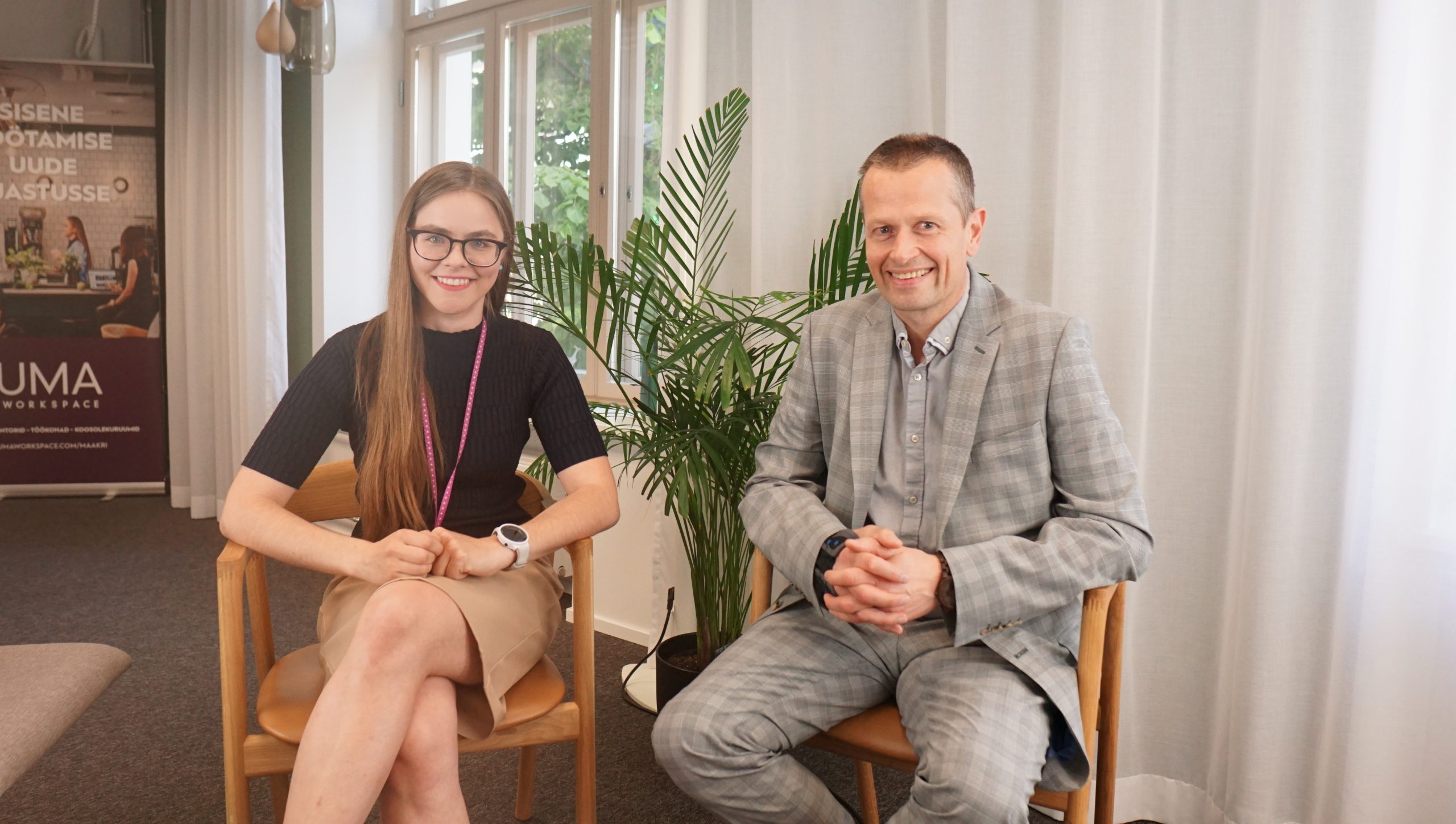simplify tax compliance with the new SME VAT scheme in the EU
Marketplace member eVAT.com summarises the new European Union VAT scheme and how it benefits e-resident SME businesses in Estonia

This guest post about the new SME VAT Scheme was written by Krunoslav Gaspert, CEO of eVAT.com, a cross-border tax compliance solution, and a trusted member of the e-Residency Marketplace.
The EU launched a new SME VAT scheme on January 1, 2025, designed to simplify Value-Added Tax (VAT) compliance for small and medium-sized enterprises (SMEs). This initiative is especially beneficial for Estonian businesses and e-residents, given Estonia’s robust digital ecosystem. By reducing administrative burdens and encouraging cross-border trade, the scheme opens new doors for growth, but it also brings complexities that require proactive planning.
In this guide, we’ll explore how the new VAT scheme works, its benefits for Estonian businesses, and practical tips to navigate its requirements with confidence.
What is the SME VAT Scheme?
The SME VAT scheme introduces harmonised VAT thresholds across EU Member States, allowing SMEs to benefit from VAT exemptions for both domestic and cross-border sales. By reducing the need for multiple VAT registrations, it simplifies operations for businesses trading across the EU.
Key Features of the Scheme
Domestic Threshold
SMEs with an annual turnover below individual EU country threshold can opt out of VAT obligations. In Estonia, this limit is €40,000, making it ideal for micro-businesses and sole proprietors serving local markets.
Cross-Border Threshold
For EU-wide turnover below €100,000, SMEs can enjoy VAT exemptions in other Member States, provided they remain under each country’s specific domestic threshold.
For example, an Estonian B2C ecommerce business generating €30,000 locally and €15,000 in Finland qualifies for VAT exemptions in both countries, as their total turnover is below the EU-wide threshold of €100,000 and Finland’s domestic threshold of €20,000.
How does the new SME VAT Scheme work?
Domestic VAT Exemptions
Estonian SMEs with annual sales under €40,000 are not required to charge VAT on their local sales, allowing them to save time and reduce costs by avoiding complex tax filings and administrative work.
Only turnover with a place of supply in Estonia counts toward the €40,000 threshold.
Types of transactions included / not included
- Sales of goods and services to B2B and B2C customers in Estonia (taxed with standard, reduced or 0% VAT rate).
- EU B2B Intra-Community supply of goods from Estonia (taxed with 0% VAT rate in Estonia).
- EU B2B Intra-Community supply of services when client didn’t provide valid VAT number (only for services taxed where the supplier is established, e.g. IT and Software Development, Digital Marketing and Advertising, Consulting…)
- EU B2C Intra-Community supply of services (only for services taxed where the supplier is established, e.g. IT and Software Development, Digital Marketing and Advertising, Consulting…)
- Real estate transactions (e.g., sales, leases) unless they are occasional or involve fixed assets.
- Insurance and financial services (e.g., loans, leasing) provided as part of regular business activities.
- EU B2B Intra-Community supply of services when client provided valid VAT number (reverse charge applies, taxed with 0% VAT rate in Estonia)
- EU B2C distance selling of goods shipped from Estonia (transactions taxed in the destination country over the OSS)
- EU B2C Intra-Community supply of services taxed according to:
- place of supply where the customer resides (e.g. digitally supplied services)
- based on the distance traveled (e.g. passenger transport)
- taxed where the event takes place (e.g. sales of the tickets for live events)
- taxed where the property is located (e.g. designing buildings or infrastructure)
- Non-Estonian Turnover
- Export of goods outside the EU
- Supply of services outside the EU
- VAT-exempt services (e.g., healthcare, education, financial services related to securities).
- Sales of the Fixed Asset
- Sales of goods and services to B2B and B2C customers in Estonia (taxed with standard, reduced or 0% VAT rate).
- EU B2B Intra-Community supply of goods from Estonia (taxed with 0% VAT rate in Estonia).
- EU B2B Intra-Community supply of services when client didn’t provide valid VAT number (only for services taxed where the supplier is established, e.g. IT and Software Development, Digital Marketing and Advertising, Consulting…)
- EU B2C Intra-Community supply of services (only for services taxed where the supplier is established, e.g. IT and Software Development, Digital Marketing and Advertising, Consulting…)
- Real estate transactions (e.g., sales, leases) unless they are occasional or involve fixed assets.
- Insurance and financial services (e.g., loans, leasing) provided as part of regular business activities.
- EU B2B Intra-Community supply of services when client provided valid VAT number (reverse charge applies, taxed with 0% VAT rate in Estonia)
- EU B2C distance selling of goods shipped from Estonia (transactions taxed in the destination country over the OSS)
- EU B2C Intra-Community supply of services taxed according to:
- place of supply where the customer resides (e.g. digitally supplied services)
- based on the distance traveled (e.g. passenger transport)
- taxed where the event takes place (e.g. sales of the tickets for live events)
- taxed where the property is located (e.g. designing buildings or infrastructure)
- Non-Estonian Turnover
- Export of goods outside the EU
- Supply of services outside the EU
- VAT-exempt services (e.g., healthcare, education, financial services related to securities).
- Sales of the Fixed Asset
Cross-Border Exemptions
SMEs can avoid VAT registration in other EU countries if their turnover in each remains below that country’s threshold and their EU-wide turnover stays under €100,000.
Simplified Compliance
The scheme introduces:
- A single VAT registration in the SME’s home country.
- Unified VAT identifiers for cross-border transactions.
- Quarterly reporting instead of monthly filings.
- Simplified invoices for exempt sales.
Can the SME Scheme Be Combined with OSS?
The OSS (One-Stop Shop) scheme, which simplifies VAT payments for cross-border B2C transactions, can complement the SME VAT scheme. Businesses can use OSS to declare and pay VAT in one Member State for transactions that exceed cross-border thresholds.
Example:
An Estonian handmade jewellery business with €30,000 in domestic sales, €15,000 in Finland, and €25,000 in Germany qualifies for VAT exemptions in Estonia and Finland under the SME scheme. However, since its turnover in Germany exceeds the local threshold of €22,000, it must charge German VAT. By using OSS, the business can report and pay this VAT through Estonia’s Tax and Customs Board, avoiding direct registration in Germany.
IOSS and SME Scheme: Mutual Exclusivity
Unlike OSS, the Import One-Stop Shop (IOSS) cannot be combined with the SME scheme. The IOSS applies to low-value goods imported into the EU (under €150) destined for final consumers. Businesses using IOSS must charge VAT at the point of sale and cannot benefit from exemptions under the SME scheme.
Opportunities for Estonian SMEs and e-residents
Estonia’s e-Residency programme provides unique advantages for SMEs embracing the new VAT scheme:
- Streamlined Compliance
E-residents can use their digital ID and Estonia's digital tax system to manage VAT returns, track transactions, and ensure compliance seamlessly from anywhere. - Cross-Border Growth
The scheme enables Estonian SMEs to expand their EU footprint without excessive administrative burdens, making cross-border trade more accessible. - Trusted Tax Advice
The e-Residency Marketplace offers access to professional tax advisors who can help businesses optimise VAT strategies under the new scheme.
Challenges to Consider
Also be aware of some challenges:
- Tracking Turnover
SMEs must monitor turnover across all Member States to ensure compliance with thresholds. Tools like Estonian e-tax systems simplify this process. - Input VAT Restrictions
Businesses opting for the SME scheme cannot reclaim VAT on purchases for exempt sales, potentially increasing costs. For instance, a graphic design agency may be unable to recover VAT on software and office supplies if operating under the scheme. - Administrative Adjustments
While the scheme reduces VAT registrations, managing exemptions and quarterly filings requires updated accounting systems or professional support.
Practical Steps for Estonian SMEs
- Assess Your Eligibility
Review your 2025 turnover projections to determine if you meet the domestic (€40,000) and EU-wide (€100,000) thresholds. - Evaluate Costs vs Benefits
Consider whether potential input VAT restrictions outweigh the advantages of simplified compliance. - Upgrade Your Tools
Use modern accounting software or hire consultants to track turnover and manage VAT obligations effectively. - Stay Informed
Keep up-to-date with specific VAT thresholds and rules in key trading countries like Finland, Germany, and Latvia.
Conclusion
The new EU SME VAT scheme is a game-changer for small businesses looking to simplify tax compliance and expand their reach. Estonian businesses, bolstered by the country’s digital infrastructure and e-Residency programme, are uniquely positioned to benefit from this opportunity. By preparing thoughtfully, SMEs can leverage the scheme to reduce costs, enter new markets, and thrive in a competitive European landscape.
For personalised guidance, explore the e-Residency Marketplace and connect with experts who can help you navigate these changes confidently.
Running an online business from Estonia? eVAT.com cuts through the tax jungle so you can focus on growth. Built by e-residents for e-residents, it handles VAT, OSS, and IOSS paperwork automatically – no more spreadsheet headaches or late-night rulebook diving.
The platform quietly organizes your digital life:
- Sales channels connected: Pulls data from Shopify, Amazon, and others in real time
- Taxes done right: Applies EU/UK rates accurately to every invoice
- Document fortress: Stores receipts, filings, and compliance records in one secure hub
Your data stays yours. Need help? Access trusted accountants through the platform’s network – partner with local experts abroad without leaving Tallinn. For digital nomads scaling globally, it’s your compliance co-pilot: clearing border-crossing paperwork, keeping you audit-ready, and turning regulatory complexity into quiet confidence.
Tell us more about your business by sending us a message over https://www.evat.com/ or book a Discovery call with our Founder
More from e-Residency
- Sign up for our newsletter
- Watch fresh video content - subscribe to our Youtube channel
- Meet our team and e-residents - register for our next Live Q&A
